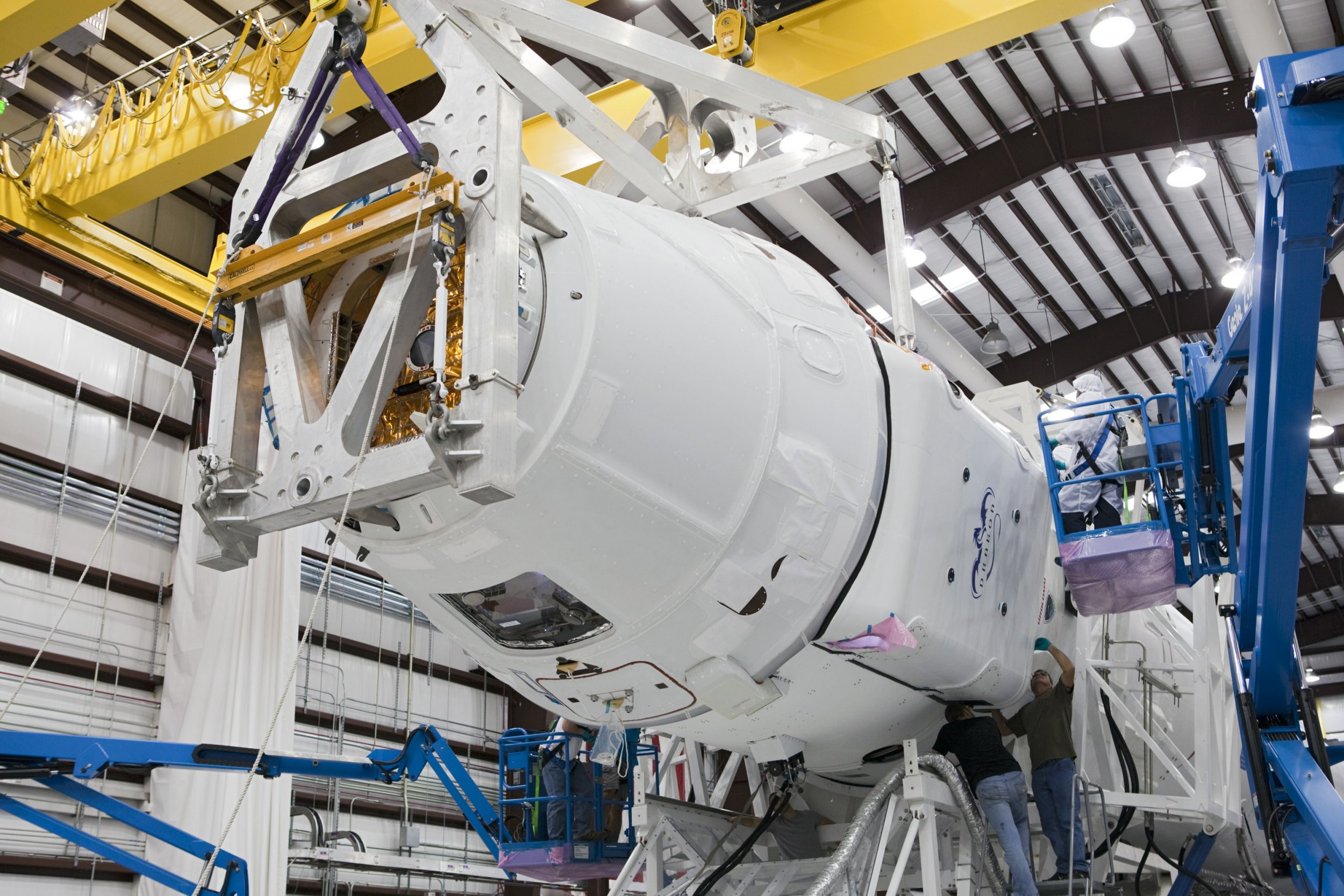SpaceX Launches Dragon Spacecraft To International Space Station (PHOTOS)
A commercial supply spacecraft by the Space Exploration Technologies Corp. took off successfully with the supplies to the International Space Station (ISS) from Florida Sunday night. The cargo is the first of the 12 Commercial Resuppply Services (CRS) missions according to the SpaceX – NASA contract.
The unmanned Dragon capsule lifted off as scheduled at 8:35 p.m. atop a 227-foot Falcon 9 rocket toward the Space Station from Cape Canaveral, Fla. The tear-shaped capsule will reach the Space Station Wednesday and is scheduled to come back three weeks later.
The launch marks the success of ongoing efforts by NASA and the U.S. government to promote privatization of the supply service missions to the ISS.
“SpaceX and NASA should be commended for their success in the launch today. As commercial spaceflight becomes familiar, we shouldn't forget the difficulty of the task being addressed by the private sector,” said CSF president Michael Lopez-Alegria.
This is the third successful launch of the Dragon spacecraft and the fourth consecutive successful launch of the Falcon 9 rocket. The launch also ends the U.S. dependency on the Russian flights to transit its astronauts and cargo to the Space Station.
"We have returned space station cargo resupply missions to U.S. soil and are bringing the jobs associated with this work back to America," he said in a statement. Overall, NASA so far has committed more than $900 million to support SpaceX programs,” said Charles Bolden, NASA chief in a statement, the Wall Street Journal reported.
Dragon carries approximately 1,000 pounds of critical supplies, including food, water, scientific experiments and Space Station parts.
“In the next three days, Dragon will perform systems checks, and start a series of Draco thruster firings to reach the International Space Station, where it will spend the duration of its mission before splashing down on Oct. 29," SpaceX said in a statement.
Dragon undertook its first flight to Space Station in May making it the first privately owned and operated spacecraft to land in the orbiting station, but it did not carry any significant cargo since it was a test flight.
The successful launch will further enable SpaceX to get similar contracts with NASA and also leverage its plan to transport U.S. astronauts by 2015. The attempt also marks the beginning of a multibillion dollar commercial space transport business with private investment.



© Copyright IBTimes 2024. All rights reserved.












